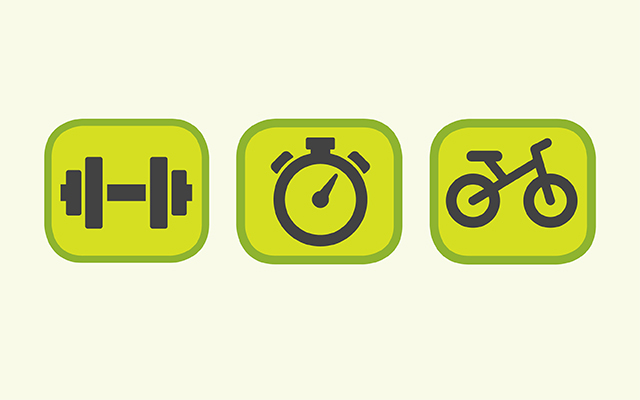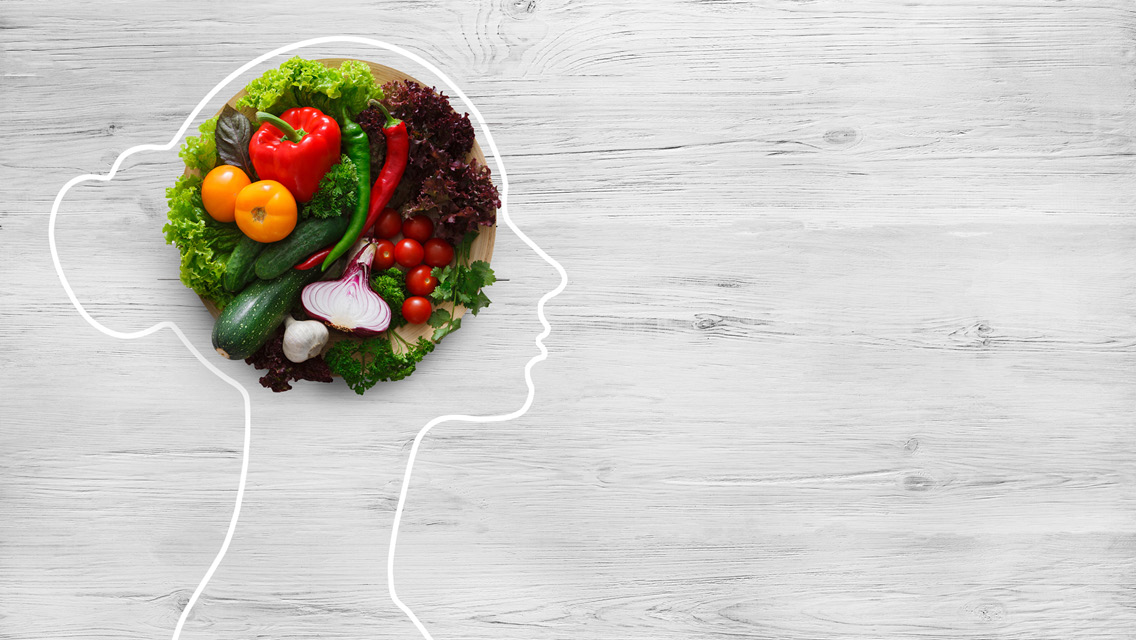We’ve all made self-deprecating jokes from time to time when we’ve flubbed the name of a longtime coworker or forgotten the PIN on a bank account. But this humor can hide a real fear rooted in long-held beliefs about our brains: that they peak in early life and inevitably decline, like the lights of a city at night slowly blinking off into darkness.
Explore this article:
Meditation ⋅ Neurofeedback ⋅ EMDR ⋅ Sleep ⋅ Psychedelics
There are obvious factors that can damage neural functioning: head injury, illness, and aging (though we all age differently and have some control over how it affects our brains).
Less obvious but increasingly evident are the factors we might not consider: sleep deprivation, traumatic experiences, eating habits, gut health, and inflammatory processes.
In short, the brain operates interdependently with the body’s other systems and functions — and the health of those systems can affect the health of the brain (and vice versa).
Given all that can influence the brain, for better and for worse, scientists are reconsidering the timeworn notions of inevitable decline and irreversible damage. They now believe the brain is much nimbler than once imagined.
New research, practices, and therapies are upending how we think about the resiliency of memory and cognitive function, as well as mental health, including depression and anxiety.
At the center of these exciting advances is the concept of neuroplasticity, the ability of the brain to adapt throughout life. That means we can change our brains for the better, and, by extension, unlock new ways of seeing and living in the world.
The traditional concept of the brain is based on a notion of abundance followed by scarcity: We’re allocated a finite number of brain cells at birth, which expire gradually — or suddenly, in the case of injury. Then we live with the diminished capacity that remains.
Many leading researchers now insist this isn’t so.
“If the brain is healthy at any age, then neuroplasticity is always possible — if not inevitable,” says Rudolph Tanzi, PhD, a Harvard University professor of neurology and a specialist in brain health and aging. “The brain has a capacity for self-repair. The same processes that rewire and reshape the brain at every moment, by connecting old synapses with new synapses, can also be used to repair the brain.”
What we might think of as inevitable decline — memory lapses, poor concentration, dysregulated moods — might actually be symptoms of a broader physiological condition. Treat the underlying problem and neural regeneration may occur. Tanzi singles out common features of an inflammatory lifestyle (lack of sleep or a bad diet, for instance) as accessible points of intervention.
“Many people think that once the brain starts to degenerate there’s no coming back,” he says. “But if you can stop the attack of neuroinflammation, compensatory regeneration will allow those neurons to regenerate.”
“Neuroplasticity is helping all the time,” he adds. “A good deal of your brain is plastic, forming new synapses with every single sensory signal.”
This capacity for forming new connections between nerve cells is key to the brain’s recovery and improved function, Tanzi explains. And just as the brain can change itself, our lifestyle choices can change it, too.
“As an infant, you have a quadrillion synapses that get sculpted down like clay until you only have the 10 trillion you need as the template for living on this planet, at this time, with this society and this family,” he says. “If you don’t have a particularly good lifestyle, those synapses start dying because inflammation takes them out as you get older.”
The good news is that an anti-inflammatory diet and lifestyle can help our surviving neurons develop new synaptic connections, which supports neuroplasticity to repair and heal the brain. The following five strategies also offer some effective ways to build — or rebuild — your brain.
1. Meditation
Experienced meditators often compare a sitting practice to training for a long-distance run: It’s challenging at first, but skill and resilience develop over time.
Meanwhile, volumes of studies have substantiated meditation’s many benefits, and recent research reveals its salutary effects on short- and long-term brain function. For instance, researchers at the University of Wisconsin–Madison’s Center for Healthy Minds examined the effects of meditation on a range of subjects, from casual meditators to world-class yogis. The results are striking.
For those new to meditation, an eight-week program in mindfulness-based stress reduction, or MBSR, a technique designed to reduce pain, anxiety, and depression, was found to dampen activity in the amygdala, a part of the brain that mediates our stress response. In accomplished meditators, these changes in mental state become inherent traits, signaling a baseline improvement in stress regulation.
Likewise, lovingkindness meditation has been shown to activate circuits associated with empathy and benevolence. As little as eight hours of this practice can reduce negative biases, and the effect becomes stronger with more practice.
Other measured gains include improved attention and memory and less mind wandering — also known as the brain’s default mode, a reactive state marked by mental chatter and anxiety.
The UW–Madison lab has also measured brain function in some of the world’s most experienced meditators, namely Tibetan monks, including master and author Yongey Mingyur Rinpoche. Some of the findings are stunning, including massive gamma activity in the monks’ brains — indicating nearly superhuman levels of awareness, compassion, and concentration.
Few meditators are likely to reach such lofty heights, but the gains in focus and brain function the practice offers suggest that neuroplasticity’s benefits last well beyond childhood.
In addition to better focus and memory, there’s mental acuity: One of the Center’s studies found that after only two weeks of meditation, some subjects increased their scores on graduate-school admissions exams. (Read this for more on starting a meditation practice.)
2. Neurofeedback
Many of us have become accustomed to some everyday forms of biofeedback from apps that tell us how well we’re sleeping, for example, or that report on our heart-rate variability. Professional neurofeedback — the process of observation and stimulation using sound or visual signals — takes this process a step further, measuring real-time brain activity and providing skilled intervention to help change our neuronal wiring.
Brain imaging through EEG (electroencephalogram) technology records electrical activity in the brain via electrodes placed on the scalp. This gives clinicians and technicians a real-time view of how the brain is working, which may help them develop treatments for a host of conditions, including ADHD, anxiety and depression, epilepsy, addiction, and mental illness.
“We have the ability to do a quantitative analysis of EEG data,” says Tampa-based neurofeedback practitioner Penijean Gracefire, LMHC, BCN. This can reveal how an individual’s brain responds to stimuli, and whether some brain regions are more or less connected than others, which influences overall brain function.
Gracefire describes the brain in terms of resource allocation. How well supplied it is (or isn’t) may be affected by overall health and lifestyle, as well as illness and injury.
The neurofeedback process helps rewire the brain for better function when it’s flagging. In the case of brain injury, for instance, it can improve coordination between the parietal lobe, which governs sensory integration, and the frontal lobe, which controls executive function.
“With real-time measurements, we can give your brain feedback when it’s changing and integrating,” Gracefire says. “We’re using the same sensory input systems for how the brain takes in information and adapts. It works because we can identify and base feedback on activity in specific locations.”
Neurofeedback’s ability to improve the brain’s integration suggests it’s possible to make all kinds of changes, including the way we look at things. “We determine what we decide to attend to,” explains Gracefire. “Brains are people. We are made out of the experiences we have — and the stuff we decide to focus our attention on.”
You can search for a local neurofeedback provider at the Biofeedback Certification International Alliance (www.bcia.org). Look for the credentials “BCN” after their names; this indicates that they have completed the brain-specific training.
There are also at-home, app-based neurofeedback tools that can help you monitor your brain activity during meditation. Muse, for instance, offers practices for staying calm and focused.
3. EMDR
Traumatic experiences can etch themselves on the brain. When those internal bruises refuse to fade, this can lead to decades of suffering and emotional distress.
A therapy called EMDR, or eye movement desensitization and reprocessing, can help defuse the emotional and physiological effects of traumatic experiences.
“EMDR is a therapeutic approach that views problems as the result of memories that are maladaptively stored in the brain,” says psychotherapist and EMDR practitioner Roger Solomon, PhD. “These distressing events can be too much to process and get stored in the brain the same way they were input there: through emotions, thoughts, images, sensations, and beliefs that are isolated in their own neural network.”
The treatment often involves clients’ tracking a therapist’s back-and-forth finger movements; other methods, such as hand tapping and spoken prompts, may also be used.
By accessing networks in the brain where the traumatic memory is stored, the technique helps the client reprocess the information, creating new neural connections and forming a less emotionally charged impression of the experience.
Recent research has shown that EMDR therapy can treat emotional trauma more quickly and effectively than cognitive behavioral therapy, dissipating negative emotions and disturbing images.
“EMDR is seemingly simple but actually quite complex,” says Solomon, who consults with government agencies and has treated first-responders to the Oklahoma City bombing and the Sandy Hook school mass shooting.
During treatment, “a chain of associations starts to occur,” he explains. “The emotions and information that were part of the event reoccur, which can be quite intense. Simultaneously, adaptive information also starts to link in.”
The brain can then potentially rewire itself around a new perception of the trauma, allowing the body to recognize that it is no longer threatened.
“I am continually amazed at people’s resilience and ability to process,” Solomon says. “It’s amazing how the mind comes up with these adaptive resolutions.”
Thousands of professional therapists and coaches trained in EMDR now practice in the United States. You can find a certified practitioner at www.emdr.com.
4. Sleep
Though it’s hardly a new technology, sleep remains one of the brain’s most potent rebuilding tools. Neurology professor Michael Howell, MD, cofounder of the Minnesota-based Sleep Performance Institute, uses a tech analogy for understanding the brain’s potential for upgrades.
“The brain can continue to develop its basic wiring package, or its hardware, until about age 25. After that, you can provide updated software packages,” he says. “You are constantly making new synaptic connections as you go about your daily lived experience.”
The process that protects the most vital of these new brain connections, he offers, happens when we’re asleep.
While we sleep, the brain prunes unnecessary synaptic connections. The strongest emotional experiences are retained, while less meaningful ones are erased. (The brain’s emotional center, the amygdala, is located next door to the hippocampus, one of its memory centers.)
There’s also a literal cleansing process that occurs in the brain during deep sleep. “During deep non-REM sleep, our brain clears out toxins,” Howell says.
While we’re in deep sleep, the size of our brain cells shrinks by about 30 percent. “With all that space around your neurons,” he explains, “various metabolic byproducts and toxins get cleared and washed out through cerebrospinal fluid.”
Among the byproducts the fluid removes is beta amyloid, a plaque associated with Alzheimer’s disease. This suggests the illness may be understood in part as a sleep disorder: The brain simply isn’t given enough time to clear out beta amyloid.
To ensure you’re getting sufficient sleep, try to maintain these habits:
- Aim for eight hours each night.
- Stick to the same bedtime and wake time to improve sleep quality.
- Prep your environment for good sleep by keeping electronic devices out of the bedroom and making the room completely dark.
(Read this for more on restoring and improving sleep quality.)
5. Psychedelics
While indigenous people have used psychoactive plants for millennia to attain heightened mental states, the contemporary psychedelic era kicked off in 1943. That’s when Swiss chemist Albert Hofmann ingested an ergot derivative called LSD that he had developed for industrial use — and it sent him on a psychedelic trip.
Hofmann described LSD as a way to access “the mystical experience of a deeper, comprehensive reality.”
A wave of LSD therapies for depression, anxiety, and other psychological issues quickly followed. One of its most prominent beneficiaries was screen icon Cary Grant. “During my LSD sessions, I would learn a great deal,” Grant once told an interviewer. “And the result was a rebirth. I finally got where I wanted to go.”
Yet by the 1960s, psychedelics were regarded by much of the scientific establishment as dangerous — even a route to mental illness. And, until recently, that was more or less the consensus among physicians.
Today, a new wave of research is exploring how natural and synthetic psychedelics affect the brain. This trend is the focus of journalist Michael Pollan’s 2018 bestseller How to Change Your Mind.
One study at Imperial College London began from the hypothesis that psilocybin, a psychedelic compound produced by certain mushrooms, would increase brain activity, given the vivid thoughts and sensory experience users describe.
Yet scans revealed a surprise: Test subjects’ brain activity actually decreased, particularly in the default-mode network, a region associated with the ego or sense of self. Activity in this network also seems to abate in the brains of expert meditators.
Exploring the potential of psychedelic drugs to rewire the brain has suggested a number of therapeutic benefits, particularly for anxiety, depression, and PTSD. Johns Hopkins University launched its Center for Psychedelic and Consciousness Research in 2019 to study these substances; it has already collated data linking psychedelics to positive clinical outcomes for smoking cessation as well as for depression and anxiety in cancer patients.
Johns Hopkins scientists also found that study subjects reported feeling more open to experience after using psychedelics.
A 2019 study in the Journal of Psychopharmacology, based on voluntary reporting, suggested a link between LSD use and reduced alcohol consumption in a small population of problem drinkers. A 2015 survey polled more than 190,000 Americans and concluded that psychedelic use may reduce suicidal impulses.
For the time being, the legal administration of psychedelics is limited to controlled medical settings, where trained researchers and therapists can help support positive therapeutic results.
Still, this growing body of evidence suggests psychedelics might eventually become an important tool to support more integrated brain function and improved mental health, one that may eventually be more widely used to treat a range of conditions.
The brain, as ever, is full of surprises.
Further Reading
Read more about health and lifestyle interventions to support brain health in these features from the Experience Life archives:





This Post Has 0 Comments